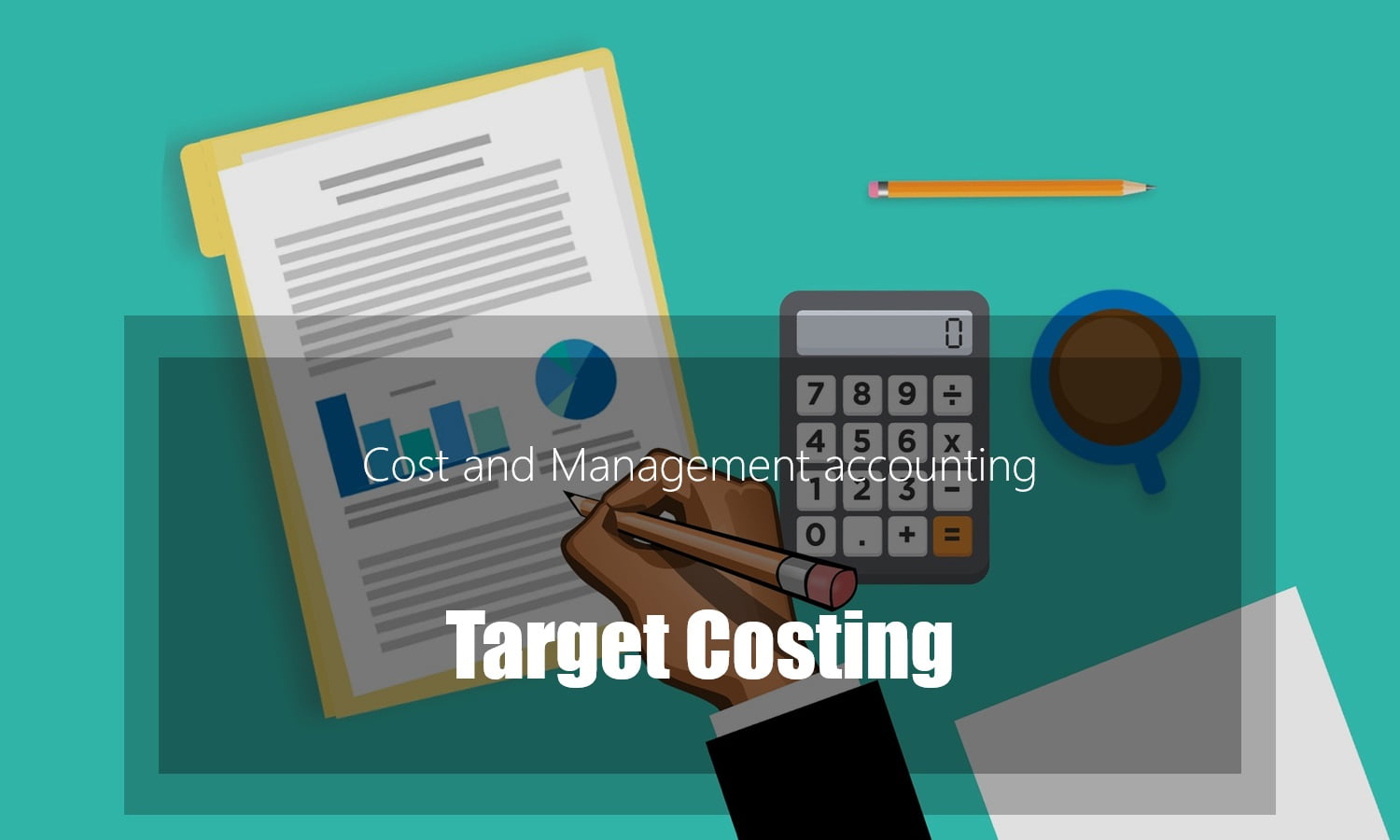Read more
- Introduction to Cost and Management Accounting
- High/Low and Linear Regression Analysis
- Inventory Management
- Accounting for Inventory
- Accounting for overheads
- Absorption Costing
- Marginal Costing
- Job Batch and Service costing
- Process Costing
- Target Costing
- Variances
- Standard Costing
- Cost Volume Profit analysis
- Relevant costing and Decision-Making Techniques
- Time Value of Money (TVM)
Target Costing Overview
- Target costing is a method of strategic management of costs and profits.
- Target costing involves; setting a target or objective for the maximum cost of a product/service and then working how to achieve this target.
- Target costing is used mainly for new product development.
-
- Having identified a target price and target profit, a target cost of the product can be established.
Target cost = Target sales price – Target profit
- The opportunities for cutting costs to meet a target cost are much greater during the product design stage than after the product development has been completed and production process has been set up.
- The estimated costs of a product design can be compared with target cost.
- If the expected cost is higher than target cost then there is a ‘Cost Gap’.
The cost gap must be closed by finding ways at the product design stage without losing any of the features, so that target cost is achieved.
Cost Gap
| Expected costs | xx |
| Target cost | (xx) |
| Cost Gap | x |
Target costing method
- Target costing is based o the idea that when a new product is developed a company will have a reasonable idea about;
-
- The sales price,
- The sales volume over its expected life.
- There may also be estimates of capital investment required and any incremental fixed cost.
- Taking the estimates of above it should be possible to calculate target cost.
- The target cost for a product might be the maximum cost for the product, which provide the minimum required return.
Elements in Estimated cost and Target costs
Raw materials costs:
The target cost should allow for expected wastage rates/loss in processing.
The price of materials should also allow for any possible increase up-to the time when the new product development has been completed.
Direct labour:
The target cost should allow for any expected idle time that will occur during manufacturing of product.
A target cost could be a target marginal cost. However it is more like that target cost will be a full cost (i,e includes a share of fixed production overheads)
Target costing and Services
- Target costing can be used for services as well as products.
- Services vary widely in nature and differ from manufacturing as follows;
-
- some service industries are labour intensive and direct materials costs can are only a small part of total costs.
- overheads costs in many services are very high.
Implication of using target costing
- The use of a target costing system has implication for pricing, cost control and performance measurement.
- A company might decide on a target selling price for either a new or an existing product, which it considers necessary in order to win market share or target volume of sales.
Advantages of target costing
- It helps to improve understanding within a company of product costs.
- It recognizes, that the most effective way of reducing costs is to plan and control costs from the product design stage onward.
- It helps to create a focus on the final customer for the product/services because the concept of ‘value’ is important; target costs should be achieved without loss of value for the customer.
- Target costing can be used together with recognized methods for reducing costs; such as Just-in-time, Total Quantity management.
Closing the Target Cost Gap
- Target costs are rarely achievable.
- Target costing should involve a ‘multi-disciplinary approach’ to resolving the problem of How to close the cost gap.
- Ways of reducing costs might be in; product design and engineering, manufacturing processes used, selling methods and raw materials purchasing.
- Other common methods of closing the target cost gap are;
-
- To re-design products.
- To discuss with key suppliers methods of reducing materials cost.
- To eliminate non value added activities or non value added features of the product design.
- To train staff.

Leave a Reply
You must be logged in to post a comment.